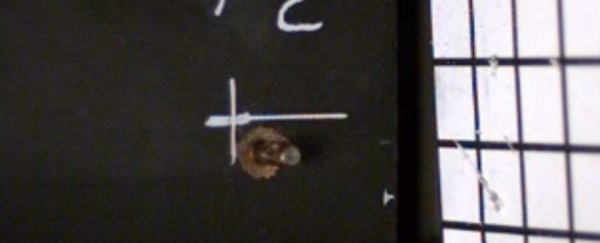Looks like Iron Man found a new material for his next outfit: researchers have come up with an ultra-tough composite metal foam (CMF) that can reduce a bullet to dust on impact. The material is lighter than metal plating too, making it ideal for the next generation of military armour for soldiers, vehicles, and tomorrow's superheroes.
The video above shows a 7.62 x 63 millimetre M2 armour-piercing projectile reduced to smithereens as it hits a wall of composite metal foam. It's part of the work of North Carolina State University engineer, Afsaneh Rabiei, who's been working on various iterations of CMFs for several years now.
According to her most recent research, the foam can absorb about 60 to 70 percent of the total kinetic energy of a projectile like the M2, while meeting the depth of penetration and backplate deformation rules set by the National Institute of Justice (NIJ). In other words, it meets the required standard for bullet-proof armour.
The indentation on the back of the CMF after the bullet strike was less than 8 mm in the latest tests, Rabiei says. To put that into context, a maximum indentation of 44 mm is allowed under NIJ guidelines, so the foam passed with flying colours. It's worth noting that it was helped by a Kevlar backing plate.
It's been a busy year or two for Rabiei, Matt Shipman reports for Phys.org. Her research has proved the effectiveness of CMFs against X-rays, gamma rays, and neutron radiation, while earlier this year, she also demonstrated that the metal foams are twice as good at handling fire and heat as the metals they're made of. That opens up a wide range of possible uses for the super-material.
And those uses go way beyond the military: CMF materials could eventually be used for fittings inside nuclear waste facilities, as part of spacecraft designs, or in certain bits of medical equipment. Plus CMFs are non-toxic, which means they're simple to manufacture and recycle.
Research into composite metal foams has been going on for several decades. The material is made by mixing hollow beads of one metal with a solid matrix of another - steel within aluminium, for example. These CMFs are stronger and can absorb more energy than foams made with one type of metal and gas-filled pores.
No doubt Rabiei and her colleagues will be getting a call from Robert Downey Jr. in the future for some tips.
You can read the latest paper on CMF materials in Composite Structures.
